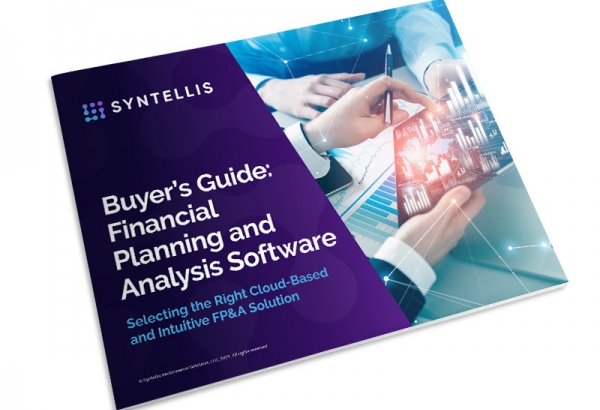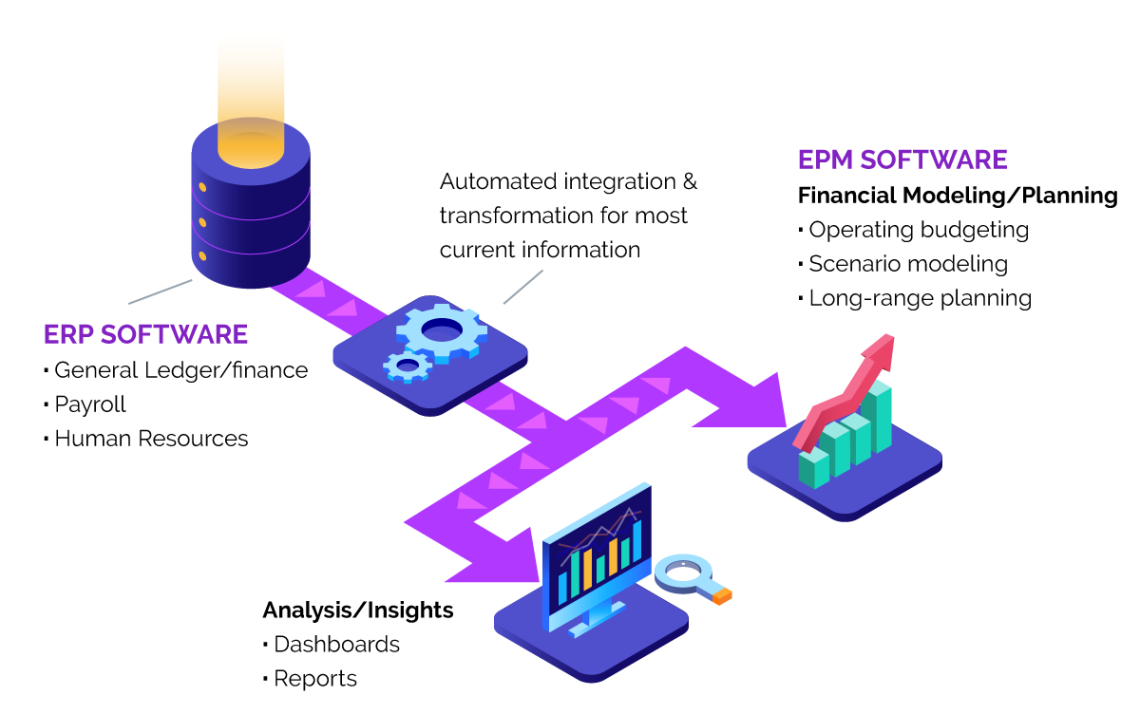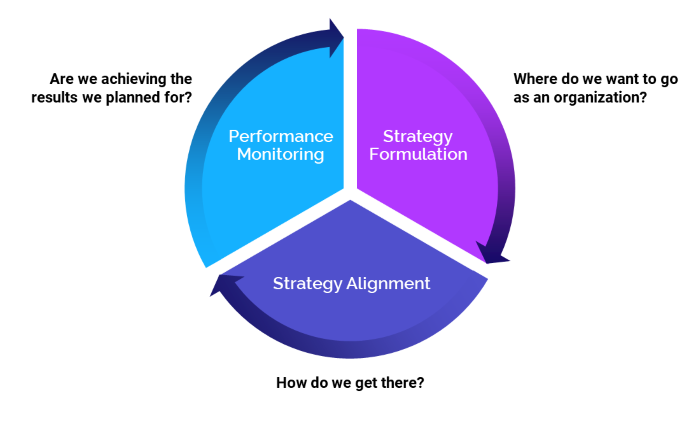What is Enterprise Performance Management?
Enterprise performance management (EPM) is the process of monitoring various functions across an organization with the goal of improving business performance.
Other common names for EPM include business performance management (BPM), corporate performance management (CPM), financial planning & analysis (FP&A), and extended planning & analysis (XP&A).
EPM key elements
An EPM system integrates and analyzes data from many sources, and includes processes and capabilities such as:
-
Budgeting
-
Planning
-
Forecasting
-
Scenario modeling
-
Key performance indicator (KPI) measurement and analysis
-
Report creation and distribution
Why are EPM tools important?
Robust financial planning and analysis capabilities in modern software solutions are essential for forward-looking organizations seeking to navigate today’s business challenges. Legacy systems and Excel-based approaches no longer meet finance professionals' intense modeling and data transparency needs.
EPM software supports critical financial planning and analysis processes by linking financial strategy to execution, allowing organizations to:
-
Drive more efficient financial processes
-
Quickly identify underperforming initiatives to better manage profitability
-
Drill down to specific KPIs
-
Boost agility and deliver accurate near- and long-range plans
-
Provide valuable reports and insights across an organization
-
Recalibrate as needed
-
Focus resources on areas with the most significant performance impact
Is EPM software part of ERP software?
Managing an enterprise organization requires powerful software that can support both day-to-day operations and forward-looking planning. Executives often turn to EPM and enterprise resource planning (ERP) software to do just that. Although EPM and ERP may seem similar on the surface, they are entirely different systems.
ERP systems help organizations manage day-to-day business operations — such as accounting, risk management, and procurement — by tracking available resources and determining the best ways to use them. ERP systems include a general ledger and basic actuals versus budget reporting.
EPM systems take financial planning and analysis further and can work with most ERP systems. A modern EPM solution will automatically pull data from your ERP system daily, eliminating the frustration and chance of error associated with manual data entry in Excel and improving planning accuracy by using the most current data. An EPM tool should act as your single source of truth, integrating with other business systems — including general ledger, HR, payroll, and others — to inform decision-making.
Enterprise performance management empowers continuous planning and improvement
For many organizations, long-range strategic financial planning and the broad set of EPM functions — including multi-year financial forecasting, capital planning, operational budgeting, financial reporting, managerial reporting, cost accounting, and rolling forecasting — are not well integrated. Rather, they are supported by a patchwork of separate applications with rudimentary modeling tools and fragmented datasets. For example, some organizations continue to rely on stand-alone spreadsheets to support the creation of forecasting and budgeting models. These fragmented applications work against finance by requiring more manual interventions, which reduce the time available for value-added analysis and decision-support activities.
Top pain points associated with disparate systems include:
-
Outdated data
-
Lack of budgeting and planning accuracy
-
Inability to effectively collaborate
-
Lack of strategic focus
-
Reduced performance visibility and accountability
Continuous planning seeks to address these pain points by integrating strategic and financial planning efforts across all facets of an organization to foster informed, timely, and data-driven decision-making.
Continuous planning brings together financial and strategic planning functions in an interdependent, cyclical flow. It empowers organizational leaders to continuously monitor the status of strategic initiatives, operations, and budget projections against actual organizational performance. Armed with these insights, you can better manage an organization’s resources, establish more accurate projections of future performance, plan accordingly, and adjust when needed. All of this is possible within an EPM solution.
Top 3 considerations when implementing EPM software
EPM software solutions can help organizations modernize processes to drive intelligent planning and performance. When considering vendors, look for a company with deep expertise in your industry, specialized products designed for your industry's unique needs, and implementation that includes advice on best practice configurations. Pay extra careful attention to these three areas:
-
Deployment model: Implementing a new EPM solution is no small feat, and organizations must carefully consider which deployment model — cloud-based or on-premises — will best suit organizational needs. A cloud-based solution offers many advantages, including low IT investment, fast deployment, and easy upgrades. But not all cloud solutions are the same. Learn more about which key characteristics to evaluate here.
-
Usability: Budgeting and financial planning processes tend to be highly collaborative and involve many participants, some of whom may not have extensive finance skills. An EPM solution must offer a guided and intuitive user experience.
A flexible interface ensures that users can balance ease and functional depth — infrequent users may prefer a simple browser-based interface. In contrast, finance users will likely prefer an Excel-based experience with a full set of features, including formulas and formatting. Usability extends well beyond simply capturing data. A modern solution should provide a variety of methods to deliver reports and analytics to users across the organization.
-
Scalability: As your organization grows, so too should your software solutions. Ensure the EPM solution you select acts as a single source of truth and has adequate security and permissions-based access protocols regardless of the number of users or the amount of data within the system.
Embracing EPM processes in your organization
When significant and ongoing change seems constant, organizations must quickly and easily adjust strategies and plans as business circumstances suddenly shift. Organizations that replace stagnant, siloed financial and operational processes with business performance management solutions have the agility needed to support strategy execution.
A continuous planning approach also facilitates a faster budget planning cycle, more transparency, and greater collaboration among finance and other departments.
Why choose Axiom EPM software
We deliver modern, scalable, and innovative enterprise performance management solutions that transform our customer's vision into reality by empowering them to:
Acquire Insights
Syntellis’ solutions transform data into intelligence, helping customers see the bigger picture.
Accelerate Decisions
With actionable insights, our clients can strategize smarter — quickly making clear plans and confident choices.
Advance the Plan
Backed by smarter decisions, our customers execute priorities and propel their organizations forward.
Learn why finance leaders across various industries choose Axiom
LEARN MORE ABOUT FINANCIAL PLANNING IN YOUR INDUSTRY

Buyer’s Guide: Financial Planning & Analysis (FP&A) Software

From What to How: Moving from Planning to Execution



